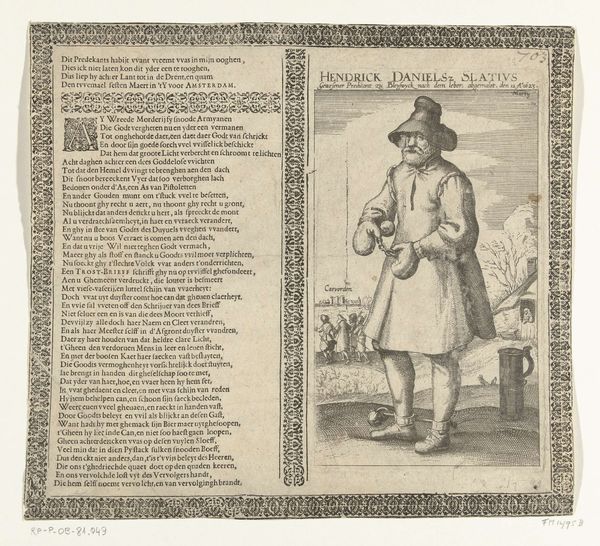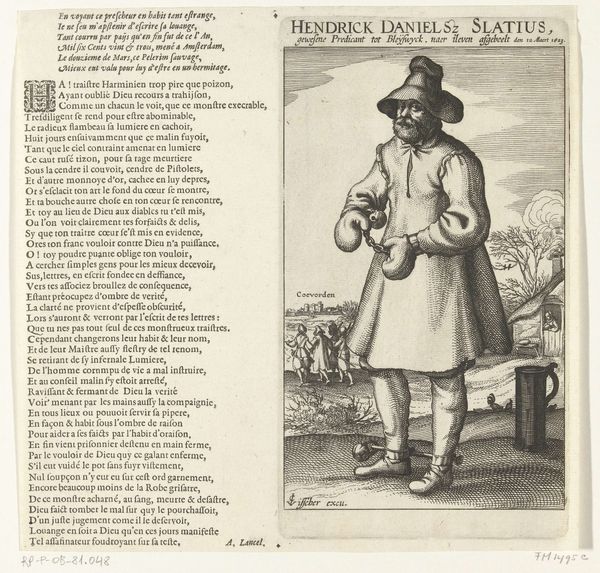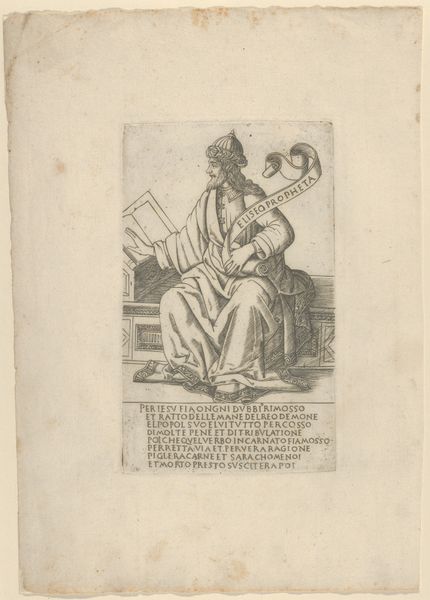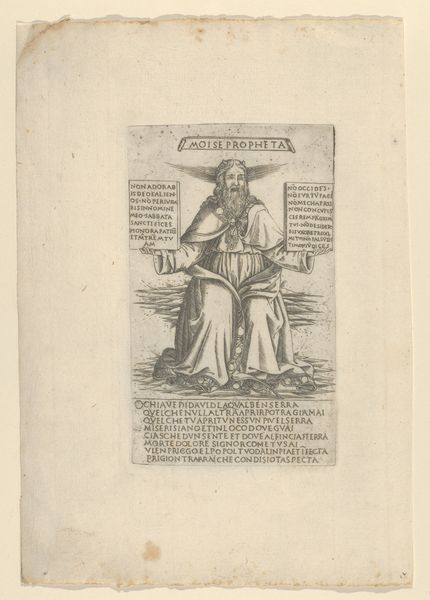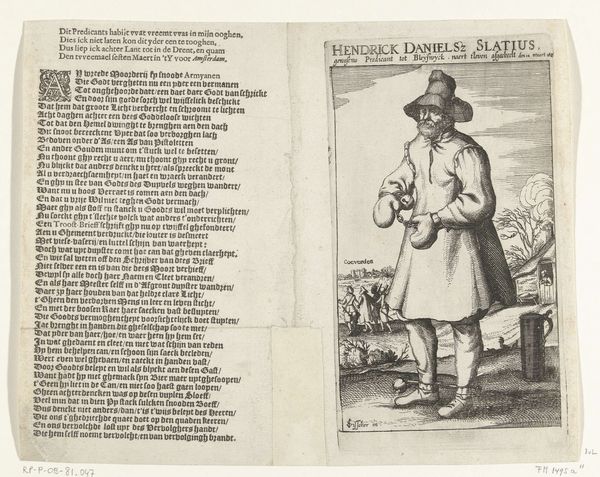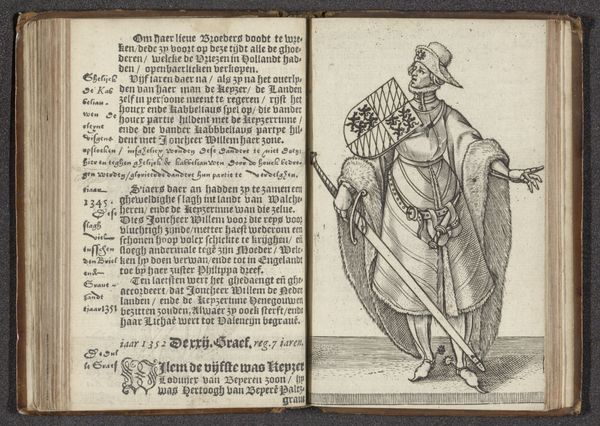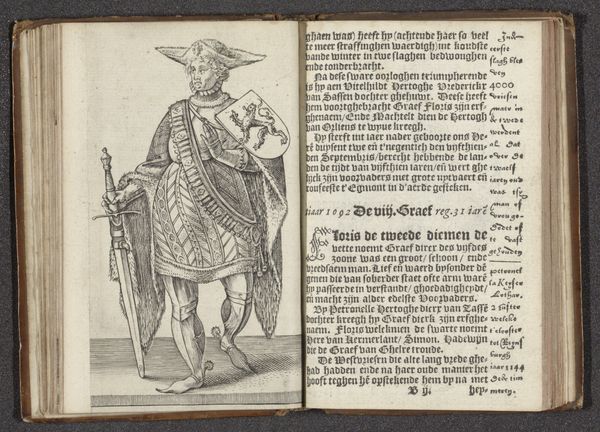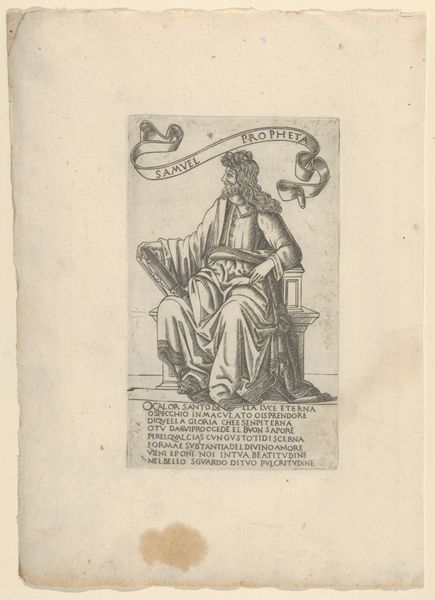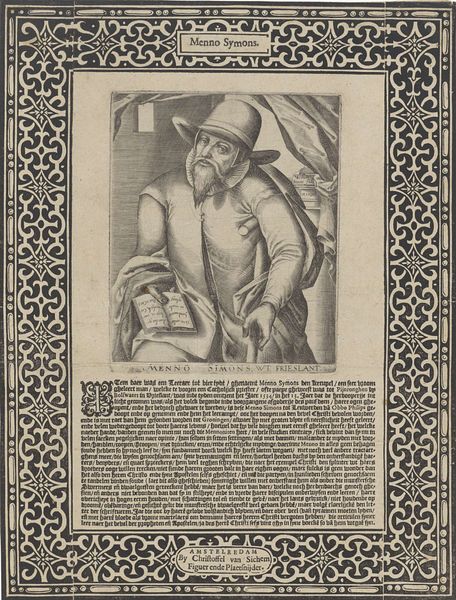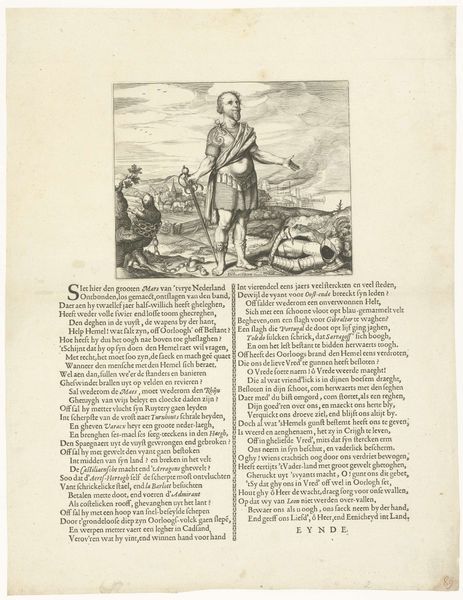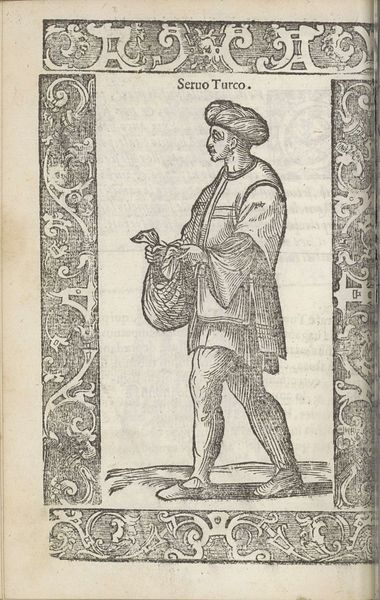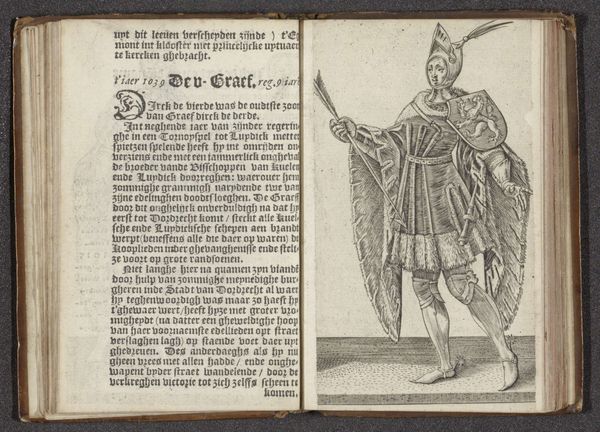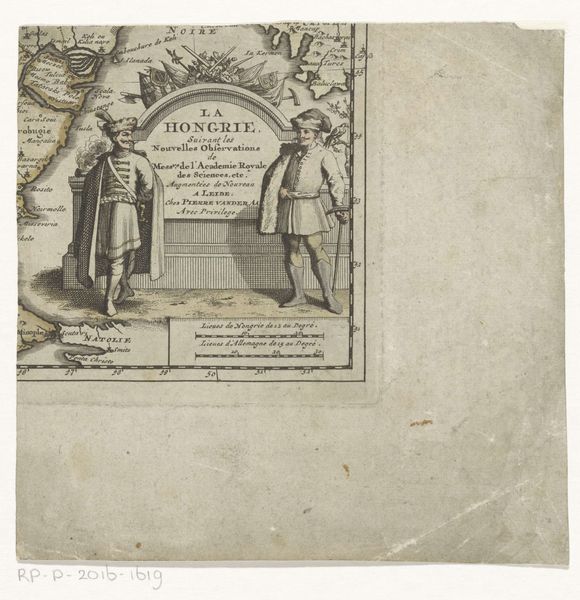
print, engraving
#
portrait
#
baroque
#
dutch-golden-age
# print
#
figuration
#
history-painting
#
engraving
Dimensions: height 275 mm, width 370 mm
Copyright: Rijks Museum: Open Domain
Curator: Let's examine this engraving, "Henricus Slatius, met hand- en voetboeien, 1623," created in 1623. It resides in the Rijksmuseum and is a striking print from the Dutch Golden Age. Editor: It strikes me as unsettling. The confinement suggested by the title becomes immediately palpable with the depiction of the shackles. There's a feeling of desperation hanging in the air. Curator: Precisely. The image meticulously renders Slatius in detail—note the somber realism of his garments, the lines etched on his face, and even the textures defining his form and dress. We are presented with an objective account, the play of light creating distinct shadows to better enhance that feeling of constraint. Editor: For me, the shackles are the most potent symbols, beyond the man himself. Handcuffs and foot restraints represent not only physical captivity but also intellectual and spiritual suppression. He isn't just a man; he's become an icon of the persecution inflicted on dissenters, embodying that fear of restriction, judgement, and cultural division that was clearly relevant then. Curator: Yes, but focusing only on Slatius misses the broader composition. Look at how the text flanking the central image functions visually, a kind of bracketing that intensifies the confinement. It serves both aesthetic and semiotic functions. Editor: Ah, you are right. And consider what else accompanies him – a depiction of a man standing near a modest house. Is that Slatius' own house being taken away? And a brew kettle and a strange scene with tiny, anonymous onlookers. He looks like he is being exhibited or ostracized in public! All the additional symbols surrounding Slatius reinforce this motif of public condemnation. Curator: Undoubtedly. The contrast between the precision of Slatius's figure and the haziness of the surrounding context, the literary inscriptions, all contribute to a sophisticated commentary. The success hinges on its compositional balance. Editor: Yes, the engraving presents us with an intricate symbol and an accessible allegory. Considering the social and religious context, it certainly made a statement. It provides a disturbing, permanent marker of both the person and period for viewers throughout the centuries. Curator: Agreed. Analyzing it formally offers just one window into its depth, a powerful glimpse into its nuanced construction.
Comments
No comments
Be the first to comment and join the conversation on the ultimate creative platform.
